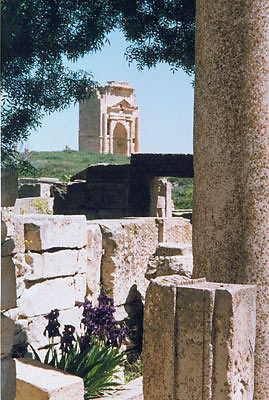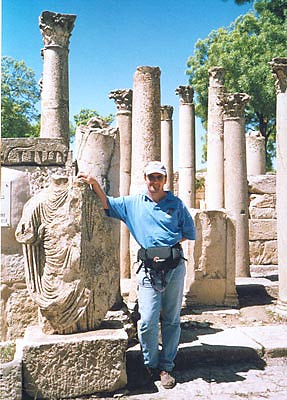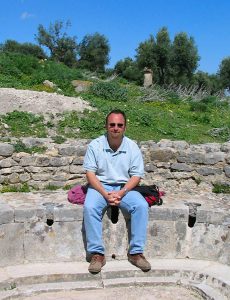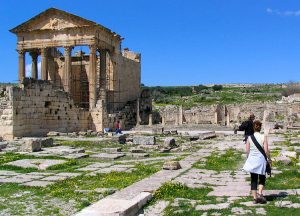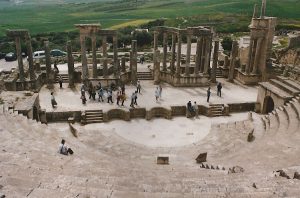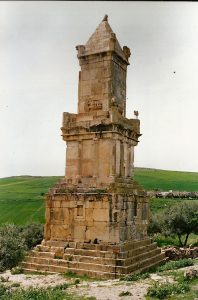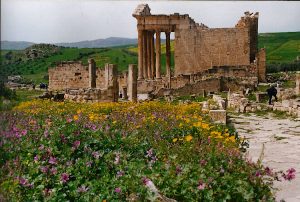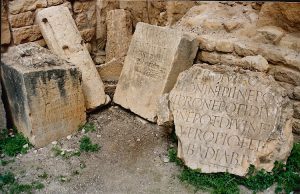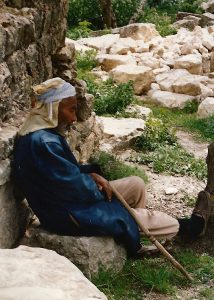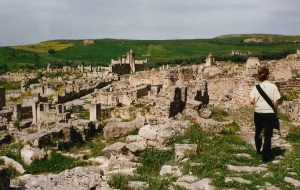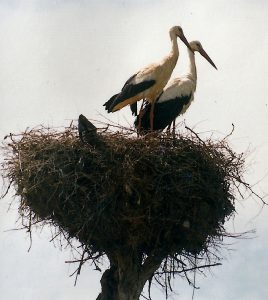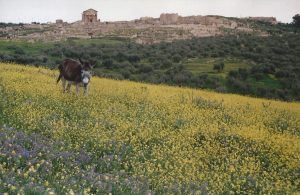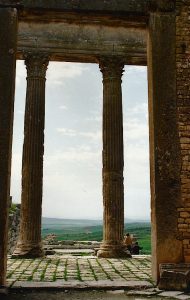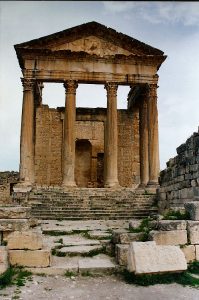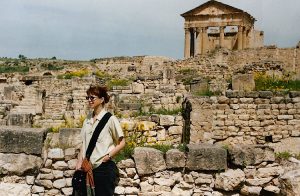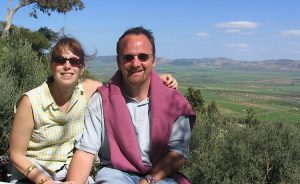
North West Tunisia
This was a trip we did driving along the north coast to Tabarka, then heading south to the Roman ruins of Bulla Regia, onto El Kef and then stopping off at more Roman ruins at Dougga before heading home. All in five days in Spring 2004.
We headed off on Monday 5th April. It was a glorious day’s drive across the north coast amid green rolling hills carpeted with wild flowers. We passed through a small forest before arriving in Tabarka in the far north west corner of Tunisia. We booked into Hotel De La Plage on 7 November St. How come all the streets in Tunisia are named after dates? This one happens to be the date of the coup d’etat which saw Ben Ali installed in power. The hotel is instantly recognisable by two enormous conch shells at the entrance. Apparently they are still there. We had a nice little balcony overlooking the street and we could see up to the Genoese fort where we then headed. There were good views of the mainland from here especially of the new housing developments, according to my diary! And also to a few new hotels which had sprung up along the beach. In the evening we went for a stroll past the harbour in search of exotic seafood. We ended up with the regular fish and chips and then had a sheesha in el Andalus cafe before heading back to the hotel.


On the way out of Tabarka the following day we went to the cork museum only to be told it had closed four years ago. Not to worry we headed on up into the Khroumirie mountains. At 1000m there were good views back to Tabarka and nice to see the famous cork trees. The famous forests here were surprisingly small however. On the other side of the mountains we passed into the cereal growing areas, a feature of the rest of the trip. Lots of fields of green swinging corn, interspersed with wild flowers, yellow and purple mostly with occasional red poppies.

It wasn’t too long before we arrived at Bulla Regia. It was very quiet – few tourists but lots of flowers! Unfortunately the museum was closed but it was very pleasant to wander around. The highlight was the underground villas, unique in the Roman Empire and many featuring their original mosaic floors.





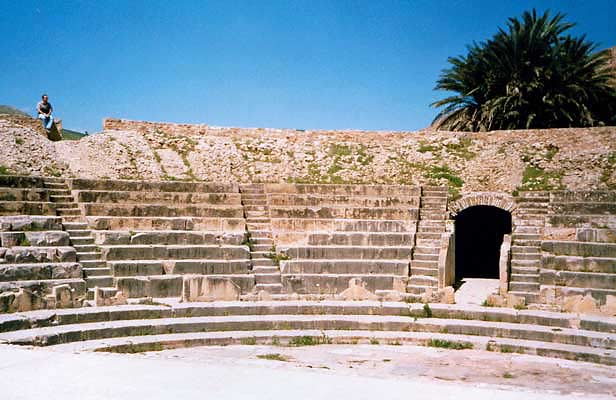

We popped into the town nearby described by The Rough Guide as the most soulless in Tunisia. That’s saying something! We stopped in a sandwich place for lunch. The owner wanted 20TD for chicken and chips!! The outside menu was all in Arabic but the most expensive dish (chicken) was 2.5TD! The most our meal should have cost us was therefore 7TD (3.5GBP). I foolishly handed over 10TD after speaking to another customer who berated the owner for ripping us off. A not uncommon experience in Tunisia unfortunately and something we rarely experienced anywhere else in the region.
We retraced our steps a bit to go to Chemtou, famous for its quarries which supplied the coloured marble for the Roman empire. No ruins as such but there was a pretty good museum. When they dug the foundations for the museum they found a horde of gold coins.
We drove on up through more rolling hills getting to El Kef, perched high up the side of a mountain. It was a busy little town, and we drove up narrow, windy streets to our first choice hotel, the Venus, but it was fully booked that night by a tour group. A little strange as we had seen very few tourists so far. Nowadays we always book in advance on line – how times change. We eventually found a decent alternative – the Hotel Sicca Veneria which was 38TD (16GBP). We had quite a big room with a small balcony overlooking street and views up to the kasbah. However, the toilet leaked – hotels in Tunisia are generally very poor value.
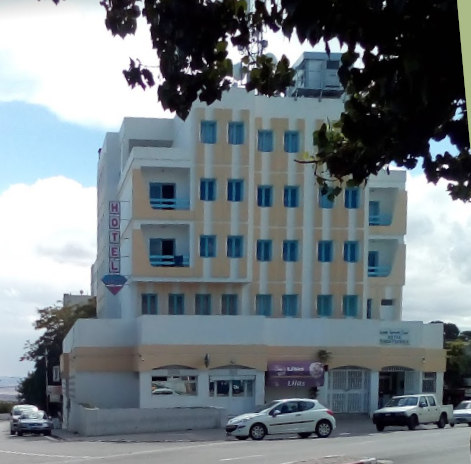
The following day we headed through pretty countryside of green wheat fields and wild flowers. Apparently it’s the most fertile area of the country and I can quite believe it. We stopped at another Roman site – that of Maktar. It was a large spread out site which felt very deserted as we were the only ones there. We found a sandwich place and got a take away so we had a picnic amongst the ruins. It was very pleasant indeed.



We got back to El Kef by 3pm so had a wander round the Medina. We didn’t find the Jewish house but did find the Sidi Maklouf mosque and had a very peaceful and atmospheric coffee and sheesha outside. We wandered up to the Kasbah where the guardian showed us round but we didn’t take any photos as it was fairly featureless place but with great views across to the surrounding plains. We also we popped into the museum. They had recently repainted it and with the usual sloppiness had managed to splash paint everywhere including on the local tortoises which were wandering around.




The next day we completely chilled out. We drove to a reservoir nearby and had a picnic and that was about it! But the following day we were off home. But not before visiting one last Roman site – probably the best in Tunisia – Dougga. And according to its UNESCO World heritage listing, “the best-preserved Roman small town in North Africa”. It was here that we encountered the first tourists but as we had got there first, we enjoyed most of the ruins on our own. It was wonderful wandering amongst these old stones, not least because the whole site was carpeted in the most beautiful wild flowers. Wandering shepherds with their flocks just added to the ambience. A great way to end our short trip.
